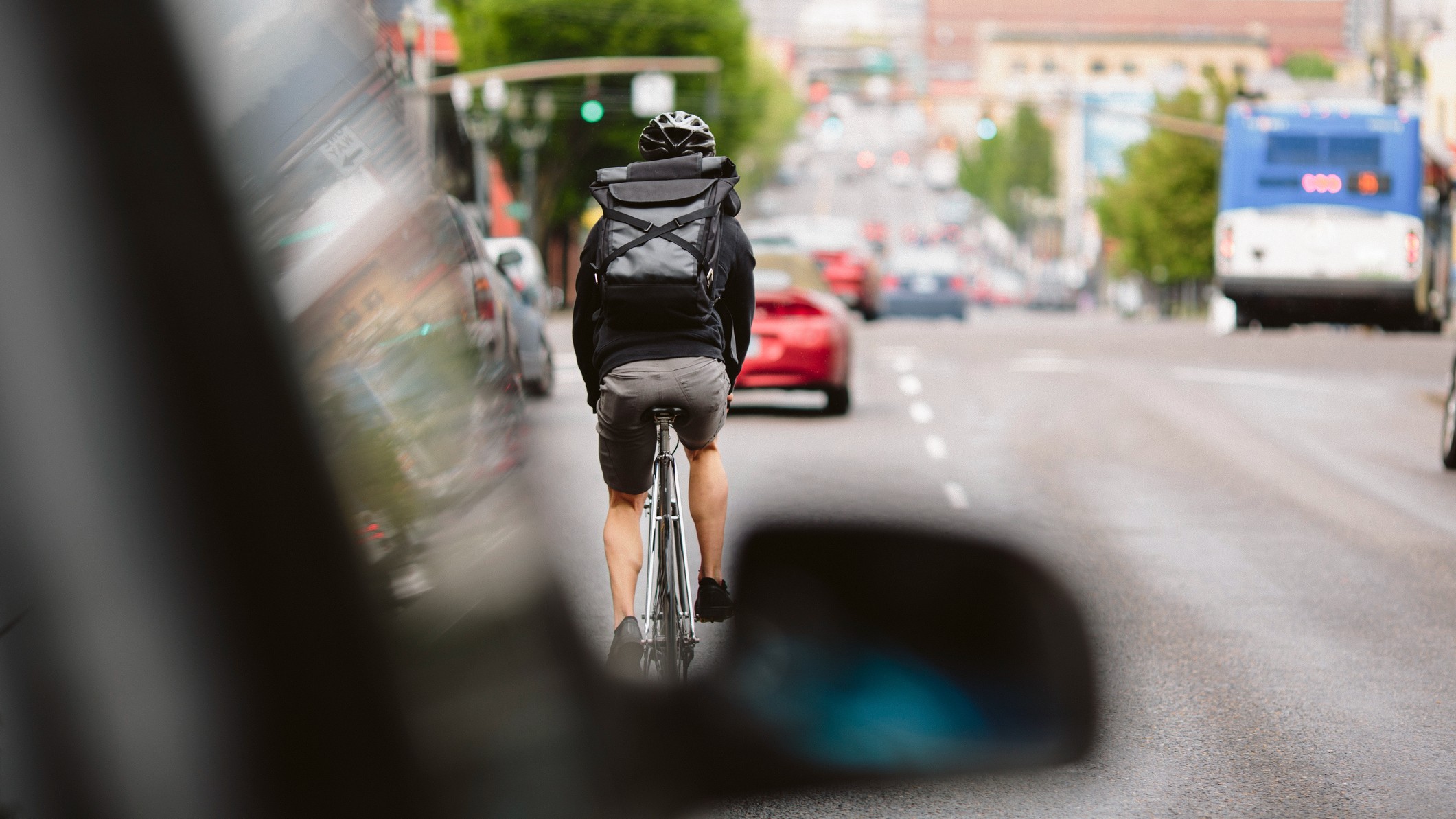Ford is developing a Covid-style road safety app that will 'ping' drivers when a cyclist is near
Automotive manufacturer researches new tech that will use Bluetooth LE to warn drivers of nearby cyclists and pedestrians


Ford is working on an app that will use Bluetooth LE to warn drivers of nearby cyclists.
The automotive manufacturer has announced it is working with Commsignia, PSS, Ohio State University, T-Mobile and Tome Software on “an affordable and scalable smartphone-based communication technology that one day could potentially help warn drivers of pedestrians, bicyclists and more – even those hidden from direct view.”
The app - which Ford is currently calling a “concept smartphone app” would run on a cyclist’s smartphone (or that of a pedestrian, e-scooter user or any other vulnerable road user) and would use Bluetooth Low Energy (BLE) messaging to communicate their location to a connected Ford vehicle. If the vehicle calculates a potential crash risk, Ford’s technology, called Ford SYNC, would show graphics of cyclists, pedestrians or others on the in-vehicle SYNC screen while sounding audio alerts.
The tech is to be demonstrated at the Intelligent Transportation Society of America’s World Congress in Los Angeles this week - and Ford will also demonstrate a version of it that uses T-Mobile's 5G network for “even more reliable communications”. The 5G network additionally is claimed to help minimise the round-trip data travel time, allowing detection alerts to quickly be delivered to the vehicle’s SYNC screen.
The system would work in a similar way to the Covid contact tracing app - AKA Exposure Notifications System - which was developed jointly by Google and Apple to help fight the pandemic.
In that situation smartphones worked together to exchange information via Bluetooth and - as many people discovered when they were ‘pinged’ despite the phone of a Covid-positive person being in the next house - Ford's app would “see" through obstacles such as walls. Unlike cameras or radar, BLE does not rely on line-of-sight detection, which means cyclists could be detected even when they’re behind buildings or other vehicles.
BLE is widely used not just in smartphones but in fitness devices such as power meters and heart rate monitors. However, while those BLE applications generally involve pairing two devices, Ford’s concept uses BLE as a beacon capable of sensing multiple other similarly equipped devices in range without pairing, which means it ought to be able to detect them from a range of around 100 metres - though Ford’s press release doesn’t specify a range.
According to Ford, the system in the vehicle interprets a vulnerable road user is using the device, differentiates pedestrians from cyclists and others based on their travelling speed, further evaluating risk by their direction.
Will the tech be rolled out to other vehicle manufacturers? Ford is a founding member of the Vulnerable Road Users Safety Consortium (VRUSC), which was formed by vehicle, bicycle, ridesharing and technology companies to find technological solutions to rising crashes with pedestrians, cyclists and others. Tome Software founded the Bike-to-Vehicle Advisory Board. So it would be nice if Ford were to develop and share the tech out of a sense of responsibility, though that's rarely the way the market works.
We assume the system would rely on cyclists, pedestrians, e-scooter users etc. downloading the app, which is the other potential stumbling block: there's a possibility that the Ford app will be rejected by some vulnerable road users as an another attempt at victim blaming by the car lobby.
Arguably the onus ought not to be on the cyclist or pedestrian to download the Ford app to ensure - or enhance - their safety. Or for the existence of an app to be an excuse for motorists to drive without making sufficient use of their own senses.
And finally, the words "potentially" and "one day" figure right at the top of the press release, suggesting Ford will not commit to any date for bringing it to market yet.

Thank you for reading 20 articles this month* Join now for unlimited access
Enjoy your first month for just £1 / $1 / €1
*Read 5 free articles per month without a subscription

Join now for unlimited access
Try first month for just £1 / $1 / €1
Get The Leadout Newsletter
The latest race content, interviews, features, reviews and expert buying guides, direct to your inbox!
Simon Smythe is a hugely experienced cycling tech writer, who has been writing for Cycling Weekly since 2003. Until recently he was our senior tech writer. In his cycling career Simon has mostly focused on time trialling with a national medal, a few open wins and his club's 30-mile record in his palmares. These days he spends most of his time testing road bikes, or on a tandem doing the school run with his younger son.
-
 Gear up for your best summer of riding – Balfe's Bikes has up to 54% off Bontrager shoes, helmets, lights and much more
Gear up for your best summer of riding – Balfe's Bikes has up to 54% off Bontrager shoes, helmets, lights and much moreSupported It's not just Bontrager, Balfe's has a huge selection of discounted kit from the best cycling brands including Trek, Specialized, Giant and Castelli all with big reductions
By Paul Brett
-
 7-Eleven returns to the peloton for one day only at Liège-Bastogne-Liège
7-Eleven returns to the peloton for one day only at Liège-Bastogne-LiègeUno-X Mobility to rebrand as 7-Eleven for Sunday's Monument to pay tribute to iconic American team from the 1980s
By Tom Thewlis